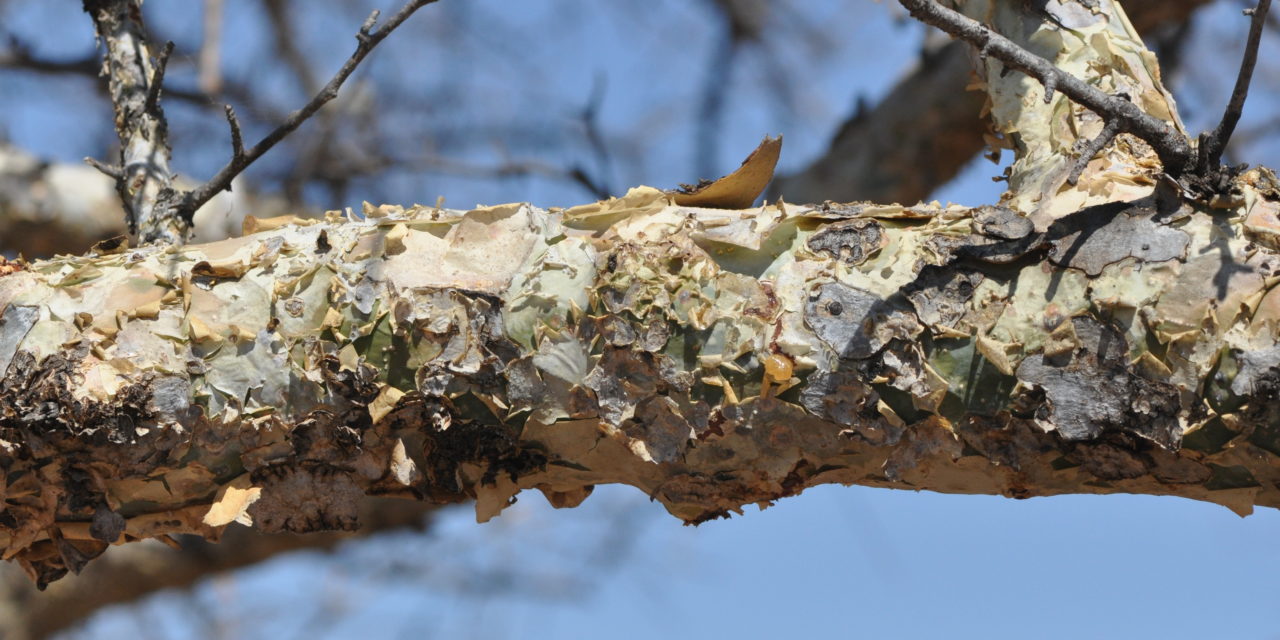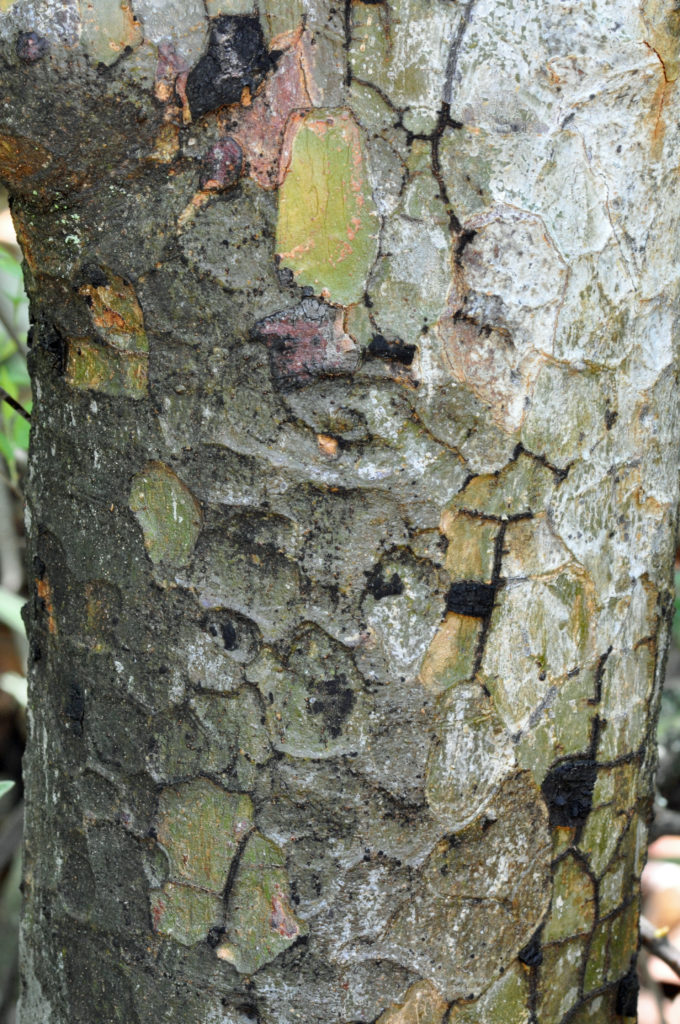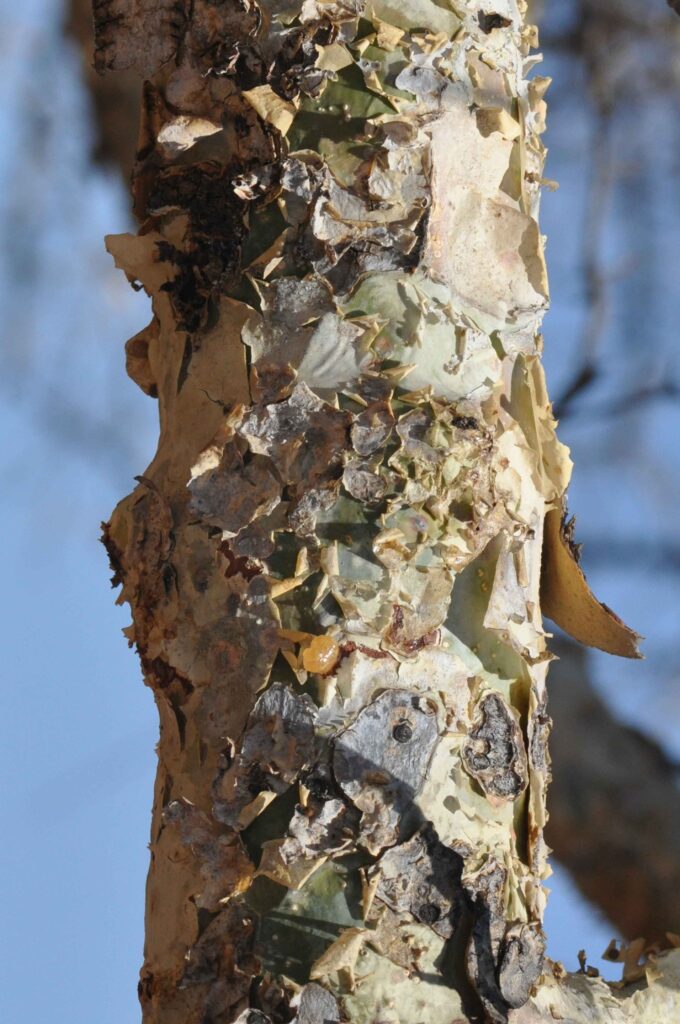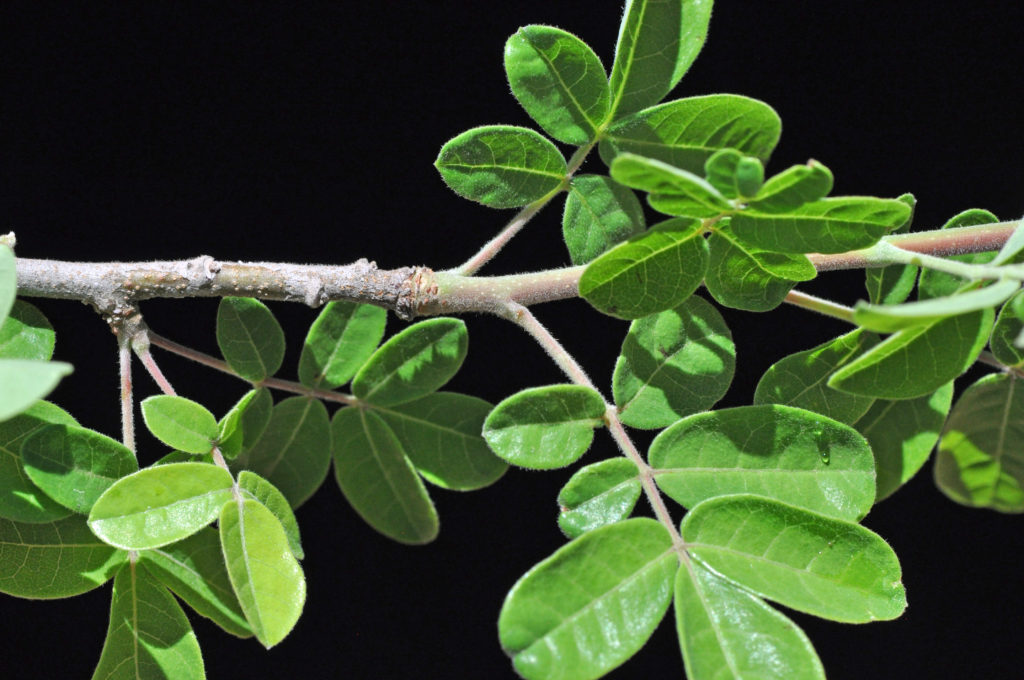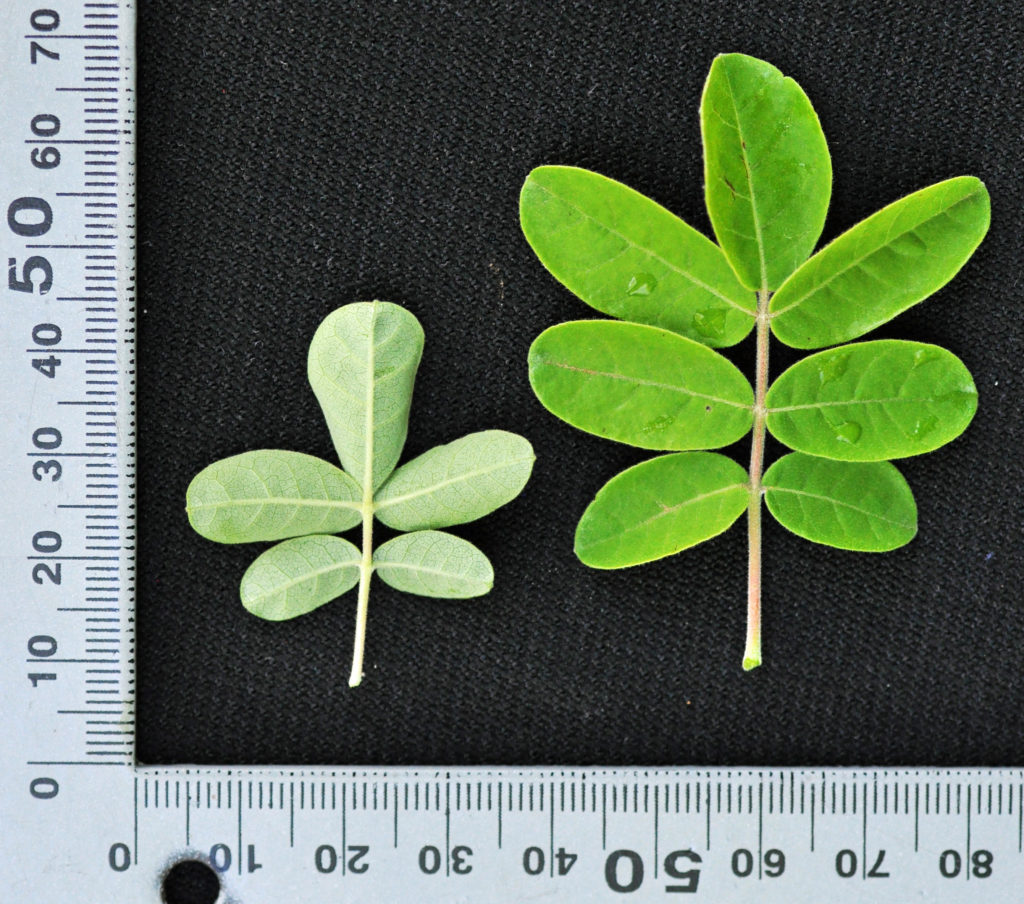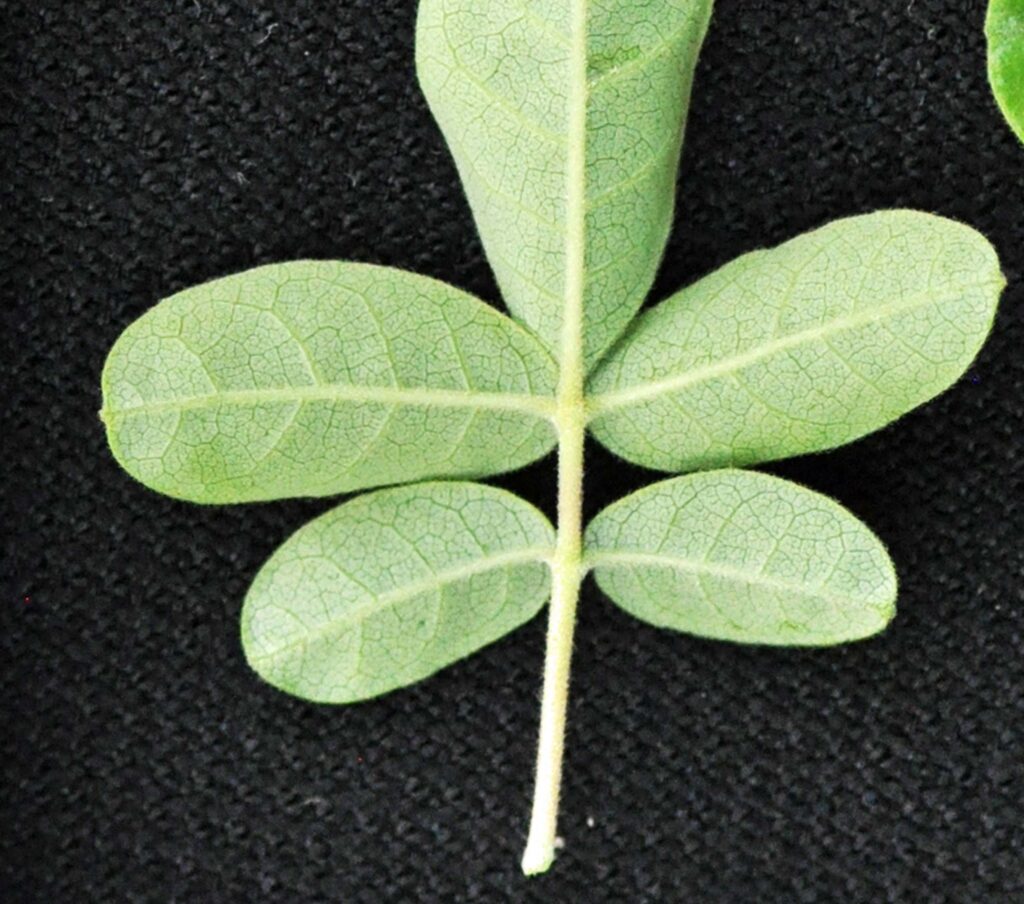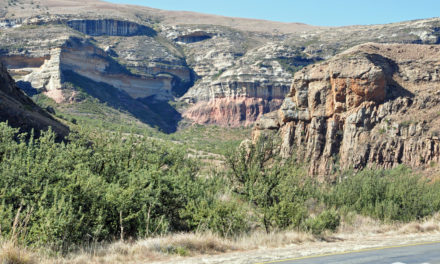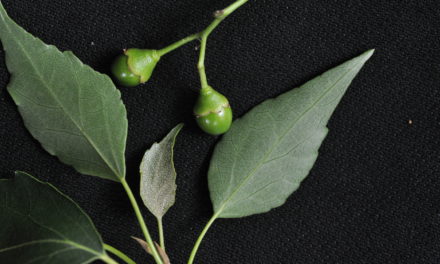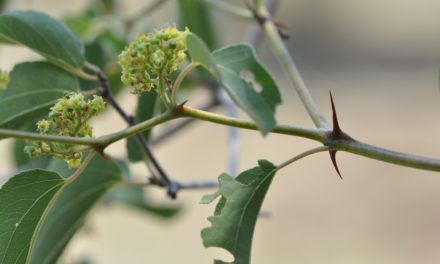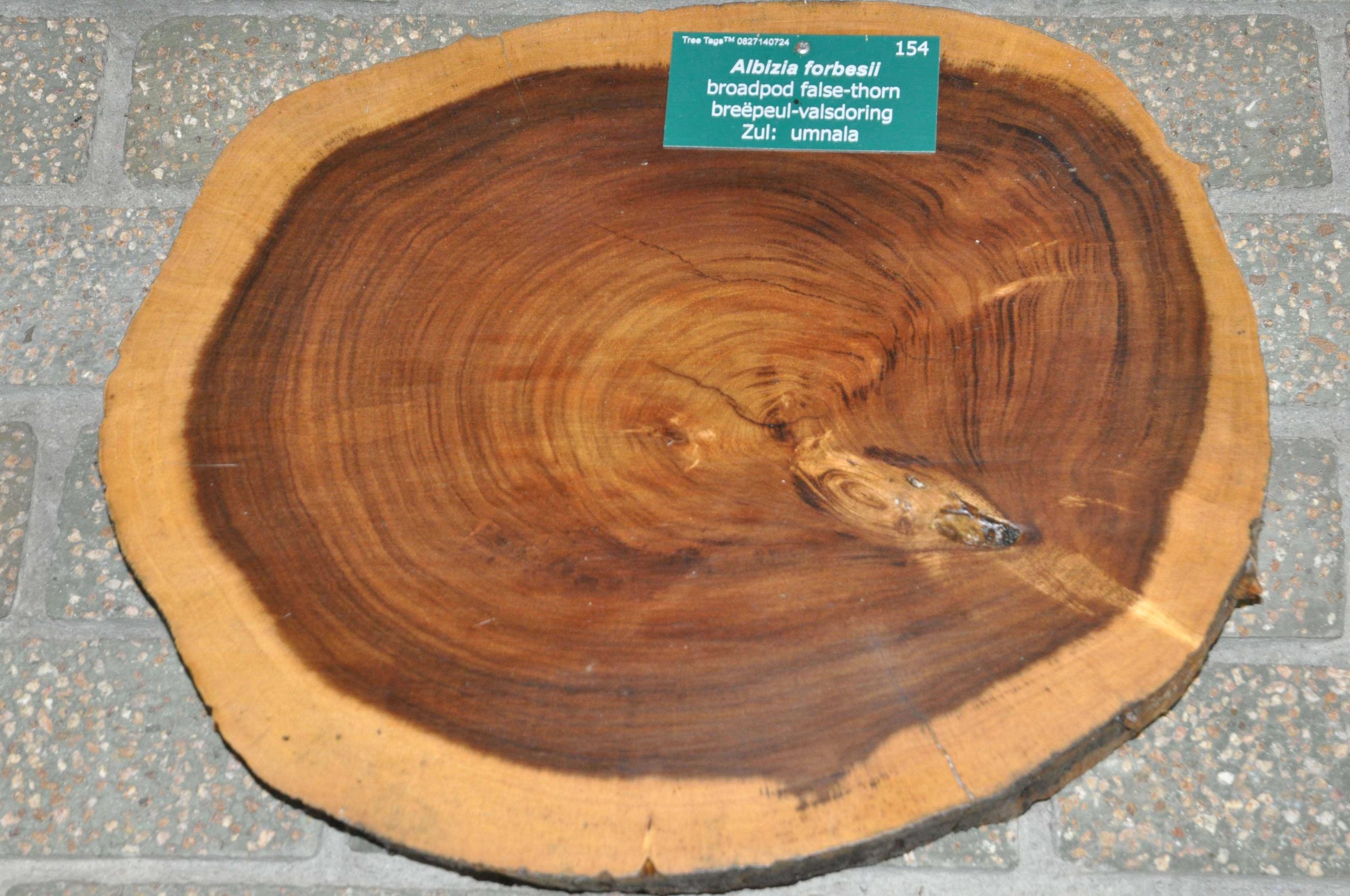General Info – summary
This dioecious, hairy Tree has greyish, smooth, shiny and resinous bark up to 8m high. Imparipinnate, hairy Leaves have leaflets with 2-6 pair of opposite leaflets and the single terminal one. The margins are entire, and stipules are absent. Regular, small, yellowish to pinkish Flowers are 4-merous. Female flowers have a superior ovary that is rudimentary in male flowers. Fruit is a drupe with one black seed.
Description
Commiphora mollis
Previous Names: Balsamodendron molle, Commiphora welwitschii, Commiphora cinereal, Commiphora boehmii, Commiphora dekindtiana, Commiphora iringensis, Commiphora krausei, Commiphora montana, Commiphora ndemfi, Commiphora stuhlmannii.
SA Tree No. 280.
Common names: (Afr) Bloustam, Duikstam-kanniedood, Fluweel-kanniedood. (Eng) Velvet Corkwood, Velvet-leaved Corkwood, Soft leaved Commiphora, Velvet Commiphora. (IsiNdebele) Iminyela. (Northern Sotho) Mmetlakgamêlô. (Setswana) Mokômoto, Seroka. (Tshivenda) Muukhuthu. (Xitsonga) Kuhuti, Nkuhuti, Shisenga, Xisenga.
Family: Burseraceae (The torchwood family, which includes frankincense from Boswellia sacra, myrrh from Commiphora myrrha both of which have an incense like odour). Neither Boswellia species nor Commiphora myrrha are indigenous in southern Africa. Non-allergenic resin occurs in most plant tissues. Worldwide there are about 16 genera and in excess of 500 species, which occur in tropical South America, Malaysia and Africa. In South Africa Commiphora is the only genus and there are about 20 species that may be regarded as trees. The Bark is smooth, aromatic and pealing or flaking. The Leaves are resinous and usually without stipules. The usually dioecious Flowers have 4 or 5 petals and sepals that are imbricate (having regularly arranged, overlapping edges, as roof tiles). Flowers are actinomorphic (regular, symmetric) and the Stamens are double or equal to the number of petals. The superior Ovary has 3-5 carpels with 2 ovules in each and the single Style ends in a capitate (forms like a head) or lobed Stigma. The pitted Fruit is often an edible drupe.
Name derivation: Commiphora: Greek: kommi – gum and phora – bearer. mollis – soft – referring to the soft, silky hairs on the leaves.
Conservation: National Status: L C. (Least Concern). Assessment: 2005 (W. Foden and L. Potter).
Tree
This soft Tree, with its milky sap, has a wide crown, with many branches and may reach 8m high. Branches are spineless and hairy when young (photo 515 – under Leaves). The Trunk is grey or greenish grey, smooth, shiny and often fluted. Bark (photo 523 & 86) that faces the sun is smooth and becomes silvery. In large trees, the bark may peel off in thick disks – revealing the green below. The trunk may be fluted. Branchlets are not spine-tipped but do have visible Lenticels (a usually raised corky oval or elongated area on the plant that allows the uncontrolled interchange of gases with the environment: photo 515 – under Leaves). Twigs (1-year-old current branch segments) extend almost at right angles to the branches. Brown aromatic Resin ducts are present in the bark.
- 523 2016/11/15 Pretoria NBG. Photo: David Becking.
- 86 2014/09/02 Mapungubwe. Photo: David Becking.
Leaves
This plant is deciduous (falling off at maturity / loss of leaves for part of the year), and the leaves may be clustered at the ends of short side branchlets (photo 515). The Leaves are Imparipinnate (pinnately compound leaf ending in a single leaflet). Each leaf ends in the single terminal leaflet – which is usually the biggest and frequently obovate (like an upside down egg, with the narrower end at the base – photo 520). There are 2-6 pairs of opposite, elliptic Leaflets and here the bases are rounded and the Apex is pointed to rounded. The smallest paired leaflets usually occur closest to the Petiole (leaf stalk – photo 520). Leaflets may end in a small point (photo 520). In this photo, the visible leaflet veins arch and join prior to reaching the margin. They are green above, lighter and more densely hairy below (photo 520) with soft silky, hairs – hence the specific name. Margins are entire (with a continuous margin and not in any way indented). The Petiole (leaf stalk) is 1-3cm long. Petiolules (leaflet stalks) are short e.g., on the terminal leaflet (photo 520) or absent. Stipules (basal appendages of the petiole) are absent. The leaves turn yellow before falling in autumn.
- 515 2016/11/15 Pretoria NBG. Photo: David Becking.
- 520 2016/11/15 Pretoria NBG. Photo: David Becking.
- 520E 2016/11/15 Pretoria NBG. Photo: David Becking.
Flowers
These plants are dioecious (unisexual floral structures with male and female parts on separate plants). Flower buds develop on thin, long, red pedicels (stalks of a single flower) that are up to 4cm long and the small yellowish to pinkish flowers are cup-shaped. Flowers may appear in axillary clusters – before or with the new leaves and are actinomorphic (Regular, symmetrical. Flowers are vertically divisible into similar halves by more than 1 plane passing through the axis). The Calyx has 4 Sepals that have a joined base. The Corolla has 4 Petals in a tubular base that open into pink to yellow lobes. The petals alternate with the sepals. A Disc (a more or less fleshy or elevated development of the receptacle) is present. The Male Flowers have a rudimentary ovary and are usually larger than female flowers. In the Female Flowers, a single Pistil (a unit of the Gynoecium, the female element of the flower, composed of the Ovary, Style and Stigma) is present. The 2-locular Ovary is superior. Here the Style is short, and the Stigma is capitate (shaped like a head). (Sep-Jan).
Fruit
The almost spherical Fruit is initially pale green to brown and matures to a dull red colour. The fruit is a 1 cm wide Drupe (a fleshy, 1-seeded indehiscent fruit with the seed enclosed in a stony endocarp), is densely hairy and attached to a stout pedicel. The black Seed is almost covered by a scarlet, 4-lobed Arilode (false–aril). The arilode is a structure in certain seeds that resembles an aril but develops from the micropyle of the ovule as opposed to the stalk). This arilode has 4 lobes that almost reach the apex of the drupe. The much sought after fruit is usually rapidly consumed. (Feb-Apr).
Distribution & Ecology
These frost tender trees thrive in hot, well-drained sandy soils in dry mixed woodland, bushveld and rocky outcrops. They occur naturally in Limpopo, North West, Mpumalanga e.g., the Kruger National Park, Botswana, Mozambique (widespread), Northern Namibia, Zambia, Malawi, Tanzania, DRC and into tropical Africa. The Leaves act as food plants for the larvae of the White Barred Gipsy Moth (Palasea albimacula). Kudu and other game browse the leaves and young Shoots. Animals like the elephant may dig up and eat the Roots. These trees Occur at medium to low altitudes (up to 1 500m) in well-drained, sandy soil. Branches become silvery when exposed to the sun.
Ethnobotany
This Tree is one of the more attractive of the Commiphora species. The frost tender tree is best propagated from truncheons (stem cutting from a selected plant – used to produce genetically identical new plants) which strike well. Plant in well-drained soil in a summer rainfall area and protect young plants from frost. Leaves are browsed by stock. The Wood is soft and of little use to man. People consume the nutritious Roots.
References
Coates Palgrave, M. 2002. Keith Coates Palgrave Trees of Southern Africa, edn 3. Struik, Cape Town.
Burrows, J.E., Burrows, S.M., Lotter, M.C. & Schmidt, E. 2018. Trees and Shrubs Mozambique. Publishing Print Matters (Pty) Ltd. Noordhoek, Cape Town.
Foden, W. & Potter, L. 2005. Commiphora mollis (Oliv.) Engl. National Assessment: Red List of South African Plants version 2020.1. Accessed on 2023/01/12.
Lawrence, G. H. M, 1951. Taxonomy of Vascular Plants, The Macmillan Company, New York. Tenth Printing 1965.
Palmer, E. & Pitman, N. 1972. Trees of southern Africa, Balkema, Amsterdam, Cape Town.
Schmidt, S. Lotter, M. & McCleland, W. 2002. Trees and Shrubs of Mpumalanga and the Kruger National Park.
van Wyk, B. & van Wyk, P. 1997 Field guide to Trees of Southern Africa, Struik, Cape Town.
http://www.zimbabweflora.co.zw/speciesdata/species.php?species_id=133340
http://www.africanmoths.com/pages/EREBIDAE/LYMANTRIINAE/palasea%20albimacula.html
http://posa.sanbi.org/flora/browse.php?src=SP
http://pza.sanbi.org/commiphora
https://www.zimbabweflora.co.zw/speciesdata/insect-display.php?insect_species_id=402560

